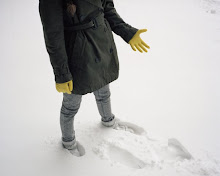
The Upper Room - 1999-2002

Pimpin' Ain't Easy - 1997

So while at home i went to the Chris Ofili exhibition at the Tate Britain. He is a Turner Prize winning British painter best known for artworks referencing aspects of his Nigerian heritage, particularly his incorporation of elephant dung. He was one of the Young British Artists, and is now based in Trinidad. I'm having a hard time forming an opinion on his work. not that any of the other posts so far have really addressed my personal opinion.
Ofili, who is of Nigerian descent, studied cave paintings there which had some effect on his style. He sometimes applies Elephant dung directly to the canvas in the form of dried spherical lumps, and sometimes, in the same form, uses it as foot-like supports on which the paintings stand. He claims that by propping the work up with the dung, he resonates the connection of the work with earth and the ground that they come from, while denying traditional forms of artwork display. Ofili's painting also reference blaxploitation films and gangsta rap, seeking to question racial and sexual stereotypes in a humorous way. His work is often built up in layers of paint, resin, glitter, dung (mainly elephant) and other materials to create a collage.
Up close his work is quite interesting. One can really see the forms layering and stages of the painting, while significant details seem lost in the grand scheme of the works. The images verge on crude, with cut outs of pornographic images of black women pasted to the canvas, while the overall images encompass black stereotypes while employing bright colours and patterns. His works bridge the gap between the sacred and profane, and he is constantly tying to rework the concept of what defines beauty, art and profane. his earlier work is amusing, the elephant dung innovative, while specifically addressing personal issues. Also one must always chuckle at titles such as "the adoration of captain shit and the legendary black stars" or "pimpin ain't easy" - depicting a giant phallus with a clown head. His later work shows care towards religious themes, as shown through the upper room - a large wooden room constructed within the Tate displaying 12 monkeys facing towards a large monkey, each in a different colour scheme drawing from both Hindu and christian last supper imagery. He really pulls out the stops to make the experience of the viewer sacred and intimate, the entry to the room through a dark echoing passage along with the room itself do possess a certain religious fervor atmosphere one experiences in a church or other holy places.
Later in his career he abandoned the elephant dung and somewhat simple themes to explore more through painting as he moved to Trinidad. His later work i found to be not anything outstanding, although his exuberant colour palette, clearly influenced by his life in Trinidad, is exciting to experience. I suppose I liked his room of watercolours and drawings, symmetrical intricacies made up of tiny heads of afroed men and women.












